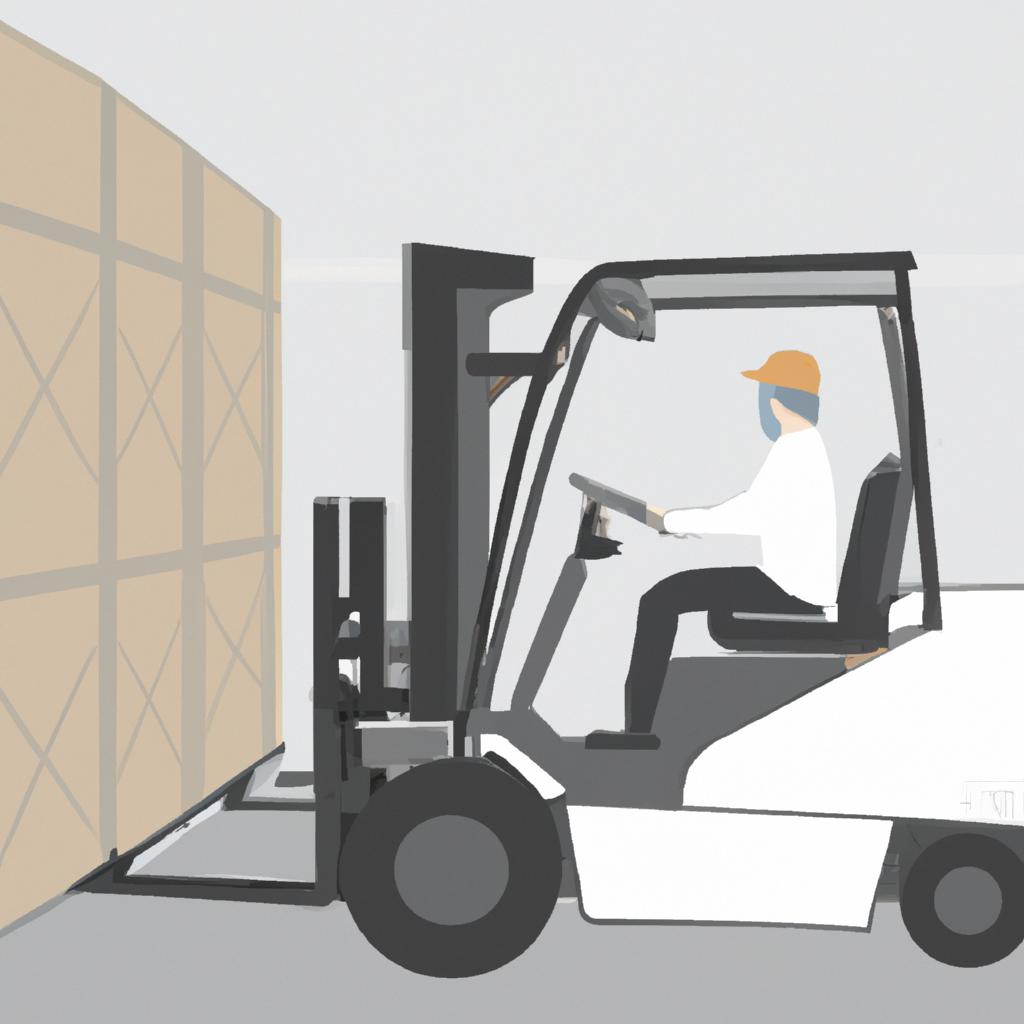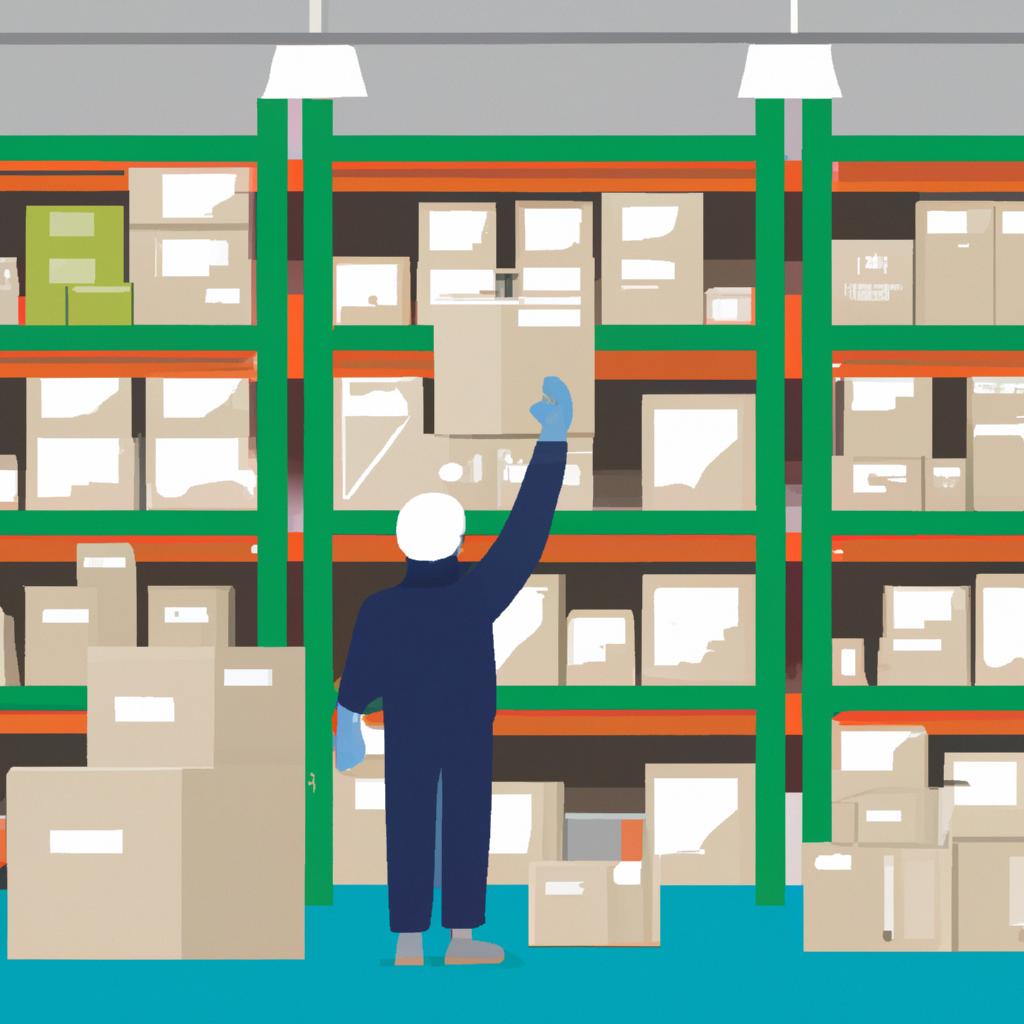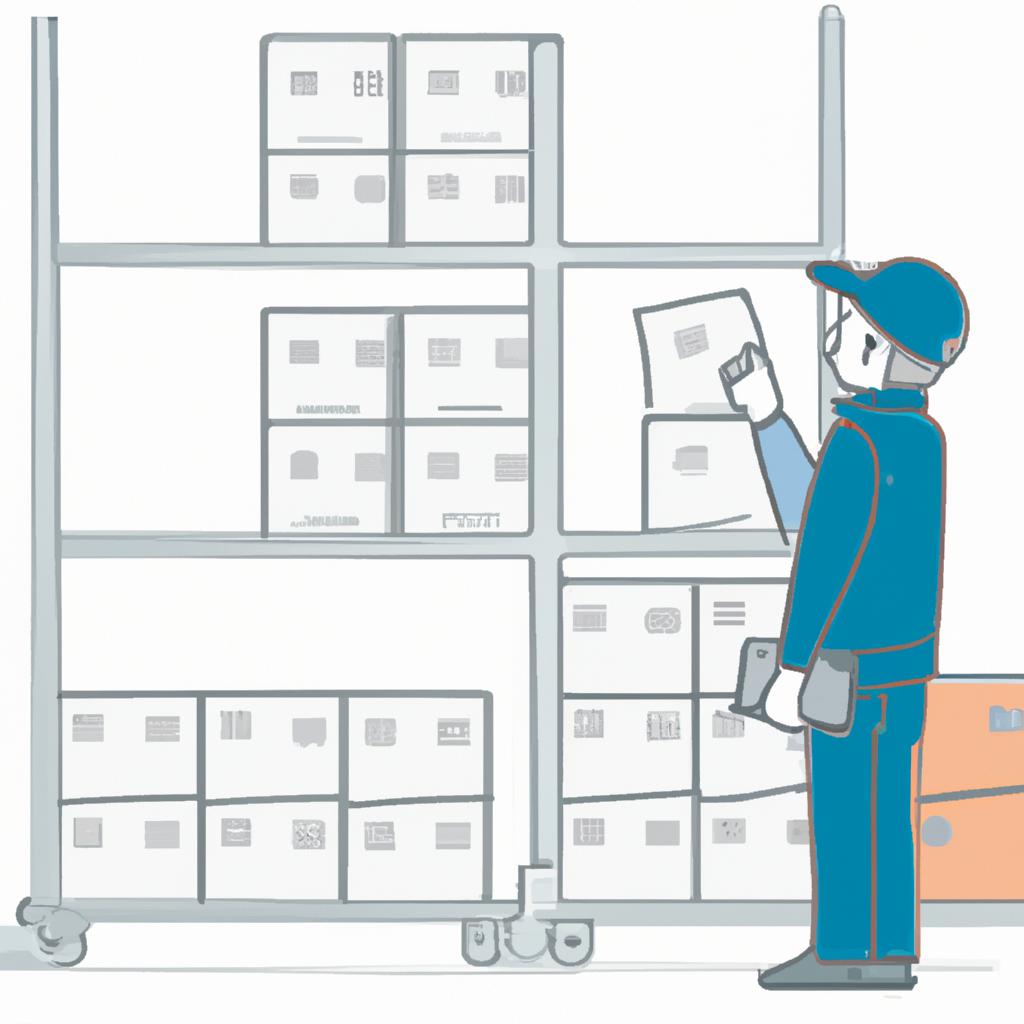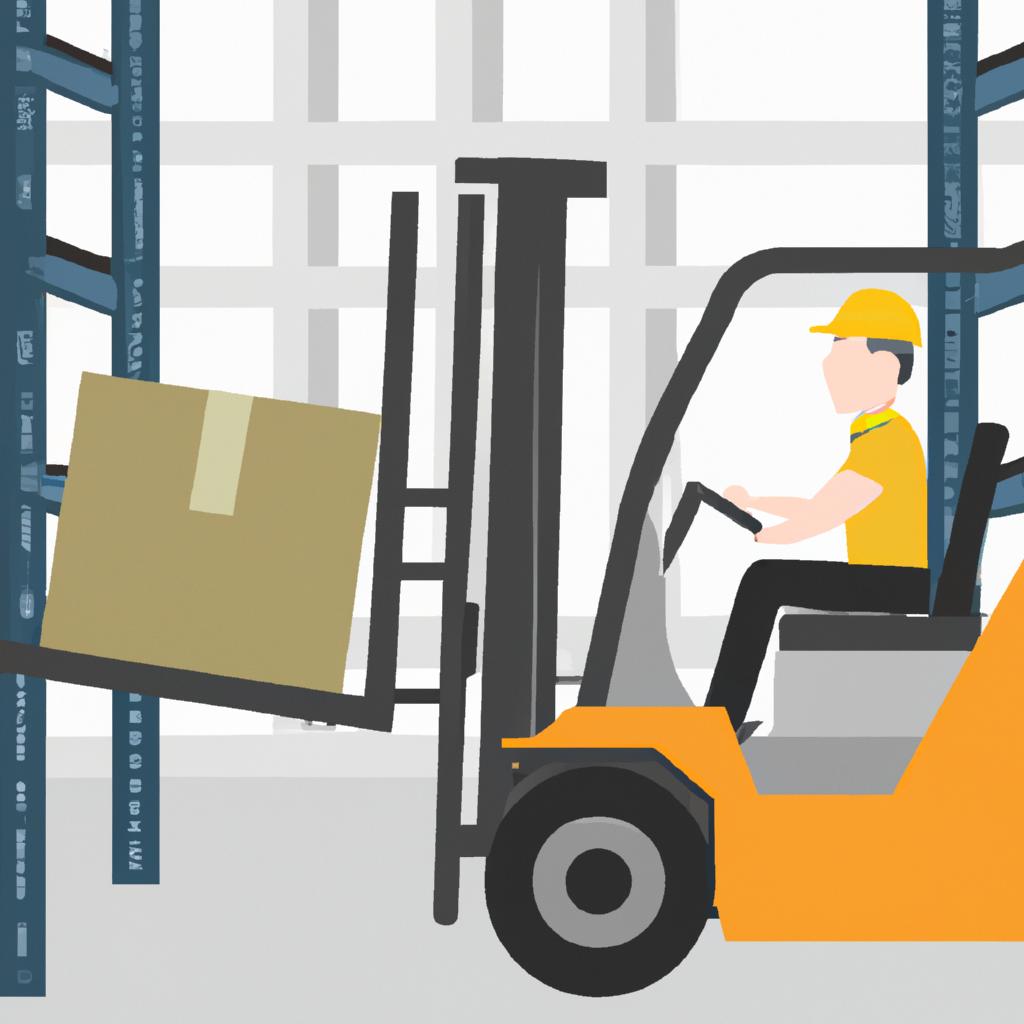Quality Control in Transportation and Logistics: Enhancing Warehouse Operations
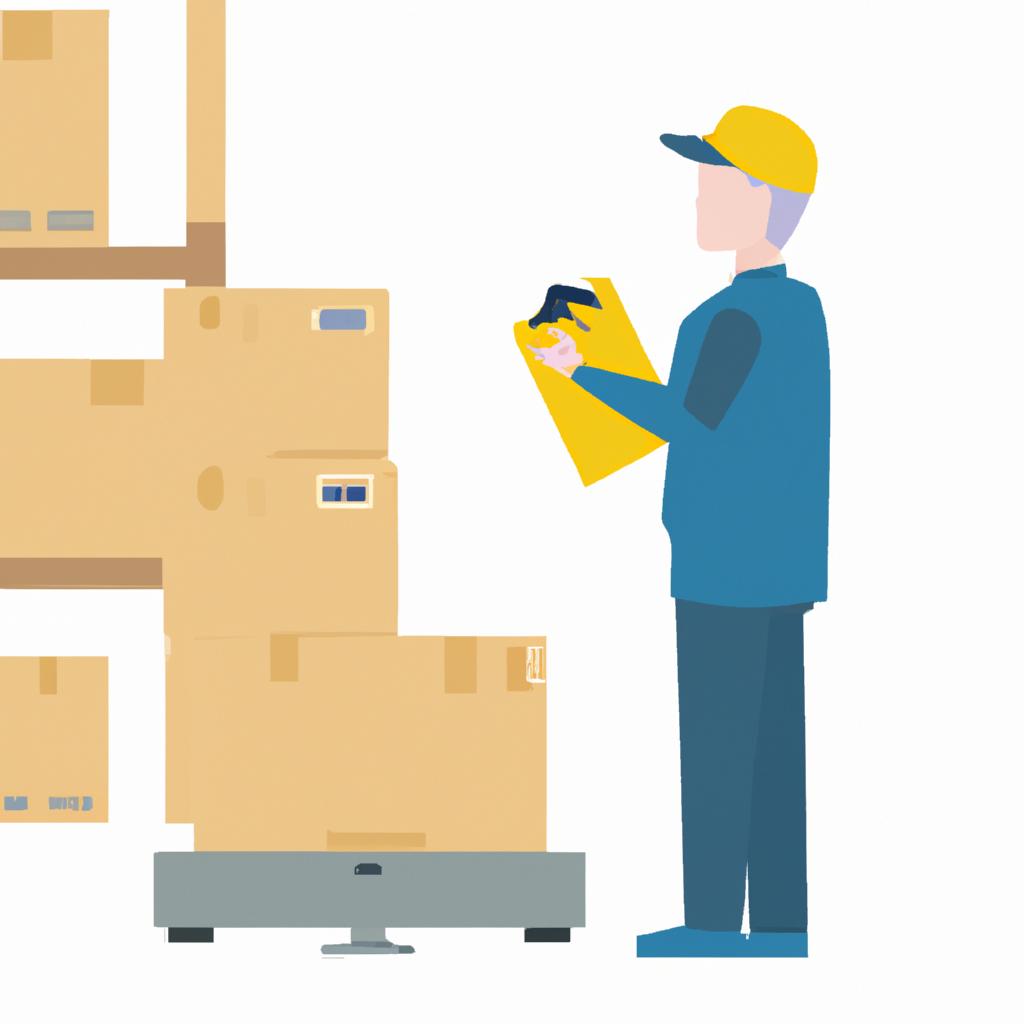

The efficient management of transportation and logistics operations is vital for organizations to ensure timely delivery of goods, minimize costs, and maintain customer satisfaction. One crucial aspect of this process is quality control in warehouse operations. Warehouse facilities play a pivotal role in the overall supply chain as they serve as storage hubs for incoming and outgoing shipments. Therefore, implementing effective quality control measures within these warehouses becomes paramount to enhance operational efficiency.
For instance, consider a hypothetical scenario where an e-commerce company experiences frequent delays in order fulfillment due to errors in their warehouse operations. Products are often misplaced or damaged during handling, resulting in dissatisfied customers and negative reviews. In such cases, the lack of proper quality control procedures can significantly impact the organization’s reputation and bottom line. This article aims to explore the importance of quality control in transportation and logistics by examining its significance in enhancing warehouse operations. By understanding various strategies and best practices related to quality control, businesses can optimize their warehousing processes, streamline inventory management, reduce errors, and ultimately improve customer satisfaction levels.
In academic writing style without personal pronouns:
Efficiently managing transportation and logistics operations is imperative for organizations seeking to ensure the punctual delivery of goods while minimizing expenses and preserving customer satisfaction rates. Quality control plays a critical role within warehouse facilities, which serve as crucial storage hubs in the supply chain. Implementing effective quality control measures within these warehouses is essential for enhancing operational efficiency.
For example, let us consider a hypothetical scenario where an e-commerce company frequently experiences delays in order fulfillment due to errors in their warehouse operations. This may include misplacing or damaging products during handling, leading to dissatisfied customers and negative reviews. In such cases, the absence of proper quality control procedures can significantly impact the organization’s reputation and financial performance. Therefore, this article aims to explore the significance of quality control in transportation and logistics by focusing on its importance in improving warehouse operations.
By understanding various strategies and best practices related to quality control, businesses can optimize their warehousing processes, streamline inventory management, reduce errors, and ultimately enhance customer satisfaction levels.
Defining Quality Control
Defining Quality Control
In the realm of transportation and logistics, quality control plays a crucial role in ensuring efficient warehouse operations. It involves implementing processes and systems to monitor and manage various aspects of the supply chain, with the ultimate goal of delivering high-quality products to customers. To understand the significance of quality control, let us consider an example: a large e-commerce company that relies heavily on its warehouse operations for order fulfillment.
One key aspect of quality control is maintaining accurate inventory levels. In this case, imagine a scenario where the e-commerce company’s system shows that certain items are available in their warehouse when they actually aren’t. This discrepancy can lead to delays in fulfilling customer orders or even result in incorrect shipments. By implementing effective quality control measures such as regular stock checks and barcode scanning technology, the company can minimize these errors and ensure accurate inventory management.
Effective quality control also involves monitoring product condition throughout the entire supply chain process. For instance, imagine if fragile electronic devices were not adequately protected during transportation due to improper packaging methods. As a result, many of these valuable items may arrive at their destination damaged or non-functional. To mitigate such risks, proper handling procedures, secure packaging materials, and robust inspection protocols should be implemented.
To emphasize the importance of quality control further, consider the following bullet point list:
- Reduction in waste and rework
- Enhanced customer satisfaction
- Increased operational efficiency
- Improved brand reputation
Additionally, here is a table highlighting three specific components essential for successful quality control implementation:
| Component | Description | Benefit |
|---|---|---|
| Process Standardization | Establishing standardized procedures across all stages of warehousing operations | Consistency |
| Data Analytics | Utilizing data analysis techniques to identify trends and patterns for proactive decision-making | Continuous improvement |
| Employee Training | Providing comprehensive training programs to equip employees with necessary skills | Competency development |
By incorporating these components into their quality control framework, companies can achieve significant improvements in warehouse operations and overall supply chain performance.
Transitioning seamlessly to the subsequent section on "Key Components of Quality Control in Transportation and Logistics," it is evident that defining quality control sets the foundation for understanding its key elements.
Key Components of Quality Control in Transportation and Logistics
Enhancing Warehouse Operations through Quality Control
Imagine a scenario where a logistics company receives an urgent order for perishable goods that need to be delivered within a tight timeframe. The warehouse team springs into action, carefully orchestrating the movement and storage of these items to ensure their freshness is preserved. This seamless operation is made possible by implementing effective quality control measures in transportation and logistics.
To enhance warehouse operations, several key components of quality control should be considered:
-
Standard Operating Procedures (SOPs): Establishing clear SOPs ensures consistency and uniformity in warehouse processes. These procedures outline step-by-step instructions for tasks such as receiving, storing, picking, packing, and shipping goods. By adhering to SOPs, employees can maintain high-quality standards while minimizing errors and inefficiencies.
-
Training and Development: Investing in staff training enables them to acquire the necessary skills and knowledge required for performing their roles effectively. Ongoing development programs contribute to continuous improvement within the workforce, ensuring that personnel are equipped with up-to-date industry best practices.
-
Technology Integration: Incorporating advanced technologies like barcode scanning systems or inventory management software streamlines warehouse operations and improves accuracy levels significantly. Automation reduces manual errors, enhances traceability throughout the supply chain process, and speeds up overall productivity.
-
Continuous Monitoring and Evaluation: Regularly monitoring performance metrics allows companies to identify areas of improvement and take corrective actions promptly. Implementing regular audits or inspections helps detect any deviations from established protocols, enabling organizations to address issues proactively rather than reactively.
| Potential Benefits of Quality Control Measures |
|---|
| 1 |
| 2 |
| 3 |
| 4 |
The integration of these quality control components optimizes warehouse operations by promoting adherence to standardized procedures, enhancing employee competencies, leveraging technology advancements, and maintaining ongoing evaluation. In doing so, logistics companies can minimize errors, reduce costs, and ensure a seamless flow of goods throughout the supply chain.
Transitioning into the subsequent section on implementing quality control measures in warehouses, it is crucial to delve further into specific strategies that facilitate the successful execution of these principles. By exploring practical approaches for incorporating quality control into daily operations, we can gain valuable insights into how warehouses can achieve optimal efficiency and effectiveness.
Implementing Quality Control Measures in Warehouses
Enhancing Warehouse Operations: Implementing Quality Control Measures
To illustrate the importance of implementing quality control measures in warehouses, let us consider a hypothetical case study. Imagine a large e-commerce company that experiences frequent customer complaints about damaged or incorrect items being delivered. Upon investigation, it is discovered that these issues arise due to errors and inefficiencies within their warehouse operations. This example highlights the critical need for effective quality control practices in transportation and logistics.
Implementing quality control measures in warehouses involves several key steps. Firstly, conducting regular inspections is essential to identify any potential issues or areas for improvement. These inspections should encompass various aspects such as storage conditions, inventory accuracy, packaging techniques, and adherence to safety protocols.
Additionally, establishing clear standard operating procedures (SOPs) plays a vital role in maintaining consistency and minimizing errors within warehouse operations. SOPs outline step-by-step instructions for tasks related to receiving, storing, picking, and shipping goods. By following these standardized processes consistently, organizations can ensure efficiency while reducing the risk of mistakes.
Furthermore, investing in training programs for warehouse staff is crucial for enhancing quality control efforts. Properly trained employees are more likely to understand the significance of their roles in ensuring accurate order fulfillment and preventing damages during handling. Regular training sessions not only improve employee knowledge but also foster a culture of continuous learning within the organization.
Finally, fostering open communication channels between different departments involved in warehouse operations contributes significantly to effective quality control implementation. Regular meetings and feedback sessions allow teams responsible for receiving orders, managing inventory levels, packing items securely, and delivering them promptly to collaborate seamlessly with each other. Such collaboration minimizes miscommunication errors and ensures smooth workflows across all stages of the supply chain process.
Markdown Format Bullet Point List:
- Increase customer satisfaction through timely delivery of undamaged products
- Minimize financial losses caused by returns or replacements due to errors
- Enhance operational efficiency and productivity
- Maintain a positive brand image and gain a competitive advantage
Markdown Format Table:
| Key Components of Quality Control | Benefits |
|---|---|
| Regular inspections | Identify potential issues or areas for improvement |
| Standard operating procedures (SOPs) | Maintain consistency and reduce errors |
| Training programs for warehouse staff | Improve employee knowledge and promote continuous learning |
| Open communication channels between departments | Facilitate collaboration and smooth workflows |
In conclusion, implementing quality control measures in warehouses is crucial for enhancing operations within transportation and logistics. By conducting regular inspections, establishing clear SOPs, providing training programs to employees, and fostering open communication channels, organizations can ensure accuracy, efficiency, and customer satisfaction. In the next section, we will explore how technology can further enhance quality control efforts in warehousing.
Transition: Moving forward into the subsequent section exploring "Utilizing Technology for Quality Control," it becomes evident that technological advancements have revolutionized various aspects of warehouse operations.
Utilizing Technology for Quality Control
Implementing Quality Control Measures in Warehouses has proven to be crucial for ensuring efficient operations and customer satisfaction. However, it is equally important to leverage technology as a means of enhancing quality control processes. By embracing technological advancements, transportation and logistics companies can further optimize their warehouse operations and achieve higher levels of efficiency.
One example of utilizing technology for quality control in warehouses is the implementation of automated inventory management systems. These systems utilize barcode scanning and RFID technologies to accurately track and manage inventory levels. Through real-time updates and alerts, warehouse staff can easily identify any discrepancies or shortages, enabling them to take immediate action. This not only minimizes errors but also improves overall supply chain visibility.
In addition to automated inventory management, another way technology enhances quality control is through the use of data analytics tools. These tools allow companies to analyze vast amounts of data collected from various sources such as sensors, GPS devices, and shipment records. By leveraging this data, warehouse managers can gain valuable insights into operational inefficiencies, bottlenecks, and potential areas for improvement. For instance, by identifying patterns in delivery delays or damaged goods incidents, proactive measures can be taken to address these issues and prevent future occurrences.
Moreover, technology enables the implementation of advanced tracking systems that provide real-time visibility on shipments throughout the entire transportation process. This allows both customers and internal stakeholders to monitor the status of their orders at any given time. With accurate tracking information available at their fingertips, businesses can proactively address any delays or disruptions before they impact customer satisfaction.
To highlight the benefits of incorporating technology into quality control practices in transportation and logistics companies:
- Improved accuracy: Automated systems reduce human error in tasks such as inventory counting.
- Faster response times: Real-time notifications enable prompt actions when discrepancies are detected.
- Enhanced productivity: Data analytics tools help identify operational inefficiencies leading to more streamlined workflows.
- Increased customer satisfaction: Advanced tracking systems provide transparency and enable proactive communication with customers.
By harnessing the power of technology, transportation and logistics companies can significantly enhance their quality control measures in warehouses. The integration of automated inventory management systems, data analytics tools, and advanced tracking systems empowers businesses to achieve greater accuracy, efficiency, and customer satisfaction throughout their operations.
In the subsequent section about "Benefits of Effective Quality Control in Transportation and Logistics," we will explore how these advancements impact overall business performance and competitiveness.
Benefits of Effective Quality Control in Transportation and Logistics
Enhancing Warehouse Operations through Effective Quality Control
To illustrate the impact of effective quality control in transportation and logistics, let us consider a hypothetical case study. Company XYZ is a global retailer that relies heavily on its warehouse operations to fulfill customer orders efficiently. In an effort to enhance their warehouse operations, they implemented various quality control measures. By utilizing technology and streamlining processes, Company XYZ was able to achieve significant improvements in their overall efficiency and customer satisfaction.
One key aspect of implementing effective quality control measures is leveraging technology. With advancements in automation and data analytics, companies can now monitor and track inventory levels more accurately. For instance, by using RFID (Radio Frequency Identification) tags on products and integrating them with a software system, warehouses can easily locate items within seconds rather than minutes or hours spent searching manually. This not only saves time but also reduces errors associated with picking the wrong item.
In addition to leveraging technology, there are several other benefits that come with effective quality control in transportation and logistics:
- Improved accuracy: Proper quality control systems ensure that all incoming and outgoing shipments are thoroughly inspected for any damages or discrepancies. This helps prevent mistakes such as shipping incorrect products or damaged goods to customers.
- Enhanced customer satisfaction: Implementing stringent quality control measures ensures that only high-quality products reach customers’ hands. This leads to higher customer satisfaction rates as they receive exactly what they ordered without any defects or issues.
- Cost savings: Through efficient quality control practices, companies can identify areas where wastage occurs and take necessary corrective actions. By reducing waste and improving operational efficiency, companies can save costs in terms of both raw materials and labor.
- Stronger reputation: When companies consistently deliver high-quality products to their customers, it builds trust and loyalty among consumers. Positive word-of-mouth marketing spreads quickly, leading to increased brand reputation and potential growth opportunities.
The table below summarizes the benefits of effective quality control in transportation and logistics:
| Benefits | Description |
|---|---|
| Improved accuracy | Thorough inspections prevent shipping mistakes and ensure the right products reach customers. |
| Enhanced customer satisfaction | High-quality products lead to happier customers who are more likely to become repeat buyers. |
| Cost savings | Efficiency improvements result in reduced waste, saving costs on raw materials and labor. |
| Stronger reputation | Consistently delivering high-quality products builds trust among consumers and enhances brand image. |
In conclusion, effective quality control measures play a crucial role in enhancing warehouse operations within transportation and logistics industries. By leveraging technology, implementing thorough inspection processes, and achieving various benefits such as improved accuracy, enhanced customer satisfaction, cost savings, and a stronger reputation, companies can optimize their performance and achieve higher levels of success.
Transitioning into the subsequent section about "Best Practices for Quality Control in Warehouse Operations," let us now explore some key strategies that organizations can implement to ensure optimal quality control in their warehouse operations.
Best Practices for Quality Control in Warehouse Operations
Section: Enhancing Warehouse Operations through Effective Quality Control
Effective quality control practices play a crucial role in improving warehouse operations and ensuring smooth transportation and logistics processes. By implementing robust quality control measures, companies can enhance their efficiency, minimize errors, reduce costs, and maintain customer satisfaction. This section explores the best practices for quality control in warehouse operations.
One example of how effective quality control enhances warehouse operations is demonstrated by Company X. Prior to implementing stringent quality control measures, Company X faced frequent inventory discrepancies, delayed shipments, and dissatisfied customers. However, after introducing a comprehensive quality control system that included regular inspections, staff training programs, and real-time monitoring tools, Company X experienced significant improvements. Inventory accuracy increased by 25%, shipment delays decreased by 30%, and customer complaints reduced by 40%.
To achieve similar success in enhancing warehouse operations through quality control, consider the following best practices:
- Standardize Processes: Establish standardized operating procedures for all tasks within the warehouse to ensure consistency and mitigate errors.
- Implement Real-Time Monitoring: Utilize advanced technology solutions such as barcode scanning or RFID tracking systems to monitor inventory levels accurately and prevent stockouts or overstocking.
- Conduct Regular Inspections: Perform routine inspections of equipment, storage areas, packaging materials, and product handling processes to identify potential issues before they escalate into larger problems.
- Train Staff Effectively: Provide comprehensive training programs to employees regarding safety protocols, proper handling techniques, and quality standards.
Emotional Bullet Point List:
- Minimize costly mistakes
- Improve overall customer satisfaction
- Increase productivity through streamlined processes
- Create a culture of accountability within the workforce
Table:
| Best Practices | Benefits |
|---|---|
| Standardized Process | Consistency |
| Real-Time Monitoring | Accurate inventory tracking |
| Regular Inspections | Early issue identification |
| Effective Training | Enhanced employee skills |
By implementing these best practices, warehouse operations can benefit from increased accuracy, reduced errors, and improved overall efficiency. Companies that prioritize quality control in their transportation and logistics processes are better equipped to meet customer demands and maintain a competitive edge in the market.
In summary, enhancing warehouse operations through effective quality control is crucial for companies seeking to optimize their transportation and logistics processes. By standardizing processes, utilizing real-time monitoring tools, conducting regular inspections, and providing comprehensive training programs, businesses can achieve greater accuracy, minimize errors, and ultimately improve customer satisfaction. Adopting these best practices will enable organizations to thrive in today’s dynamic business environment while maintaining high standards of operation.

